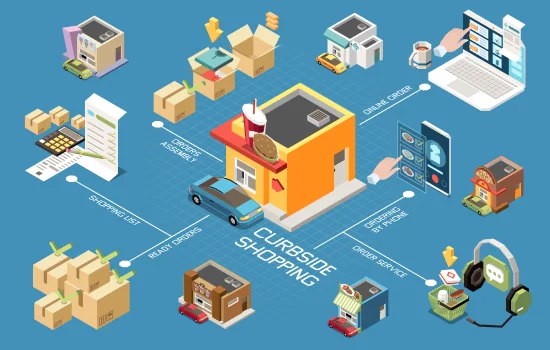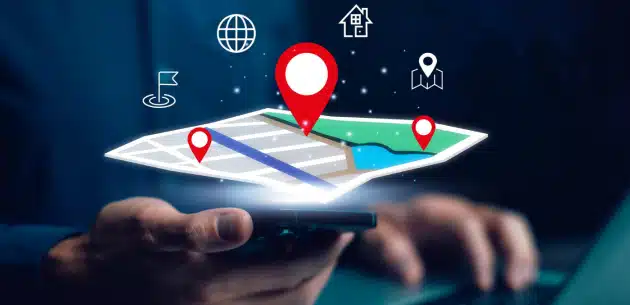
The lines between physical stores and the digital world are fading fast in today’s retail landscape. Gone are the days when customers were confined to a one-dimensional shopping experience. Today’s consumer expects a seamless journey, effortlessly transitioning between browsing products online, researching in-store with a mobile device in hand, or making a purchase through their preferred channel. This creates a need for retailers to ensure they are adapting to the standards and can provide consistent, frictionless journeys across all touchpoints, whether a customer is interacting in person or online. In this blog we will explain to you in further detail what the omni-channel experience is, the benefits it presents, key strategies you can use, and examples of what a true omni-channel experience looks like.
What is the Omni-channel Experience?
True omni-channel retail puts the customer at the center of the brand experience, ensuring a cohesive journey regardless of how they interact with your business. This means a customer who browses your website on their phone in the morning should be able to seamlessly pick up their purchase in-store later that day, with access to the same product information, promotions, and loyalty points across all channels. Similarly, a shopper who walks into your brick-and-mortar store should be able to easily access online features like product reviews or size charts on a provided tablet or their mobile device.
Omni-channel retail requires a deep understanding of customer behavior and preferences across channels. By gathering and analyzing customer data, retailers can personalize the customer experience, tailoring product recommendations, promotions, and loyalty programs to individual customer needs. This not only fosters stronger customer relationships but also provides valuable insights that can inform product development, marketing campaigns, and overall business strategy.
Benefits of a Cohesive Omni-channel Approach
Enhanced Customer Satisfaction: Customers value consistency. When their experience is seamless, regardless of where they shop, it builds trust and loyalty.
Increased Sales and Conversions: Removing roadblocks between channels (like inconsistent pricing or inventory information) encourages spending.
Improved Brand Perception: A well-executed omni-channel strategy makes your brand seem modern, responsive and customer-centric.
Data-Driven Insights: Tracking customer interactions across channels leads to better analytics about their shopping journey, informing everything from product development to marketing campaigns.
Key Strategies for Implementing Omni-channel Retail
Customer Data Unification: Build a centralized customer data platform to track behavior across online and offline interactions. This will allow you to personalize offers and communications.
Consistent Brand Messaging: Your brand voice, imagery, and values should be apparent on every platform and in every store.
Inventory Visibility: Provide real-time inventory information across channels so customers can see if a product is available online or at a nearby store.
Mobile Optimization: Ensure your website and any apps are responsive and easy to navigate on mobile devices, as many shopping journeys start on smartphones.

Flexible Fulfillment Options: Offer buy-online-pickup-in-store (BOPIS), curbside pickup, and fast shipping options to accommodate different customer preferences.
Empowered Store Associates: Equip in-store staff with tools and knowledge to access customer data on the spot, assisting shoppers with online orders, returns, and other inquiries.
Examples of Omni-channel in Action
- A customer browses your product catalog on Instagram, clicks through to your online store, but decides to purchase later at a physical location where they can try on the item.
- A shopper adds items to their online cart but doesn’t complete the order. They later receive a targeted email reminder or retargeting ad, prompting them to finalize the purchase.
- A loyal customer reaches out to customer support via online chat and is pleasantly surprised when a store associate greets them by name in-person the next day, already knowing their issue.
Conclusion
Omnichannel retail isn’t just a trend; it’s becoming the expectation for success in an increasingly connected retail landscape fueled by eCommerce growth. Studies show that omni-channel retailers can experience a 30% increase in customer lifetime value compared to those with disconnected channels. This is because omni-channel retail fosters customer loyalty by providing a sense of familiarity and ease no matter how a customer chooses to interact with your brand. Additionally, omni-channel strategies allow retailers to collect valuable data on customer behavior across all touchpoints. This data can then be used to personalize the user-experience, recommend relevant products, and ultimately drive sales. By embracing omni-channel retail, businesses can ensure they are meeting the evolving needs of today’s digital-savvy consumers.

 Eashan Mehta
Eashan Mehta




